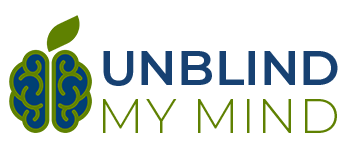 What is carrageenan?
What is carrageenan?
Carrageenan is a polysaccharide (complex sugar) extracted from seaweed. It is added to food as a gelling agent and stabilizer.
Where does carrageenan come from?
Carrageenan is extracted from red seaweed.
What is carrageenan used for?
Carrageenan is used to maintain a homogenous appearance in many foods, especially foods that contain fats. A food’s appearance is a critical attribute for sales. Consumer appeal drops if foods appear separated.
Below are some products containing carrageenan and the amount of carrageenan typically found in these products.
Carrageenan Uses in Food and Personal Care Products[1]
|
Use |
Approx. use level, % |
|
Dessert gels |
0.5-1.0 |
|
Low-calorie Jellies |
0.5-1.0 |
|
Pet-foods (canned) |
0.2-1.0 |
|
Fish gels |
0.5-1.0 |
|
Syrups |
0.3-0.5 |
|
Fruit drink powders and frozen concentrates |
0.1-0.2
|
|
Relishes, pizza, barbecue sauces |
0.2-0.5 |
|
Imitation milk |
0.03-0.06 |
|
Imitation coffee creams |
0.1-0.2 |
|
Whipped toppings (artificial) |
0.1-0.3 |
|
Puddings (nondairy) |
0.1-0.3 |
|
Toothpastes |
0.8-1.2 |
|
Lotions |
0.2-1.0 |
There are two types of carrageenan, which differ due to the manufacturing process used to extract the compound from seaweed. One is called refined carrageenan E407, and the other is lesser-refined carrageenan E407a, also known as PES (Processed Eucheuma Seaweed). The E number is a code used to identify food additives per government regulations, but these types of carrageenans are often not differentiated on food labels. Yet, consumers may react differently to these compounds due to the different product profiles. E407a has more impurities, including seaweed protein and protein degradation products. Protein degradation results in increased levels of free amino acids, such as glutamate, by breaking the bonds that hold a protein’s amino acids together.
Carrageenan may be an issue for those sensitive to free-glutamate in two ways. First, carrageenan may contain small levels of free glutamate as a contaminant. Second, carrageenan can cause inflammation that results in the release of glutamate from our nerve cells to the site of inflammation. As a result, many who find themselves sensitive to free-glutamate often benefit from also avoiding carrageenan.
There are no published data available about the levels of free (unbound) glutamate in carrageenan. Testing the level of free (unbound) glutamate is not required by the FDA because (bound) glutamate is something that occurs naturally in foods.(For an explanation of bound versus free glutamate, click here.) The problem is that free glutamate does not occur naturally in whole foods at the levels found in some processed foods. For example, a natural whole food such as unprocessed tomatoes contains 0.1% free glutamate compared to some processed foods that contain 15-20% free glutamate.
Seaweed contains by far the highest levels of free glutamate (1-3%)[2] in a natural whole food. Red seaweeds – the type that carrageenan is typically extracted from – also have a high protein content (about 31% protein in dry weight) of which about 9.3% is bound glutamate in the protein.[3] Typically, vegetables have less than 3% protein of which about 5% is bound glutamate. MSG used to be made from seaweed until cheaper methods were found. Although there is a lack of specific labeling of free glutamate content in carrageenan, people often assume that this ingredient is a source of free glutamate and should be avoided by those sensitive to glutamate. This is a reasonable assumption based on the information available.
The protein contaminants in the less refined carrageenan product (E407a) are sure to become somewhat degraded during the manufacturing process. This will generate free glutamate. Seaweed is also known to contain another compound, domoic acid (3% dry weight), that acts similarly to glutamate and activates the same neurons as glutamate.[4] The question is: how much glutamate or domoic acid remains after carrageenan extraction process? This data is not available.
The second issue related to glutamate is best explained by what happens to carrageenan after we digest it. Some food manufacturers argue that the high molecular weight of carrageenan prevents it from crossing the intestinal barrier and therefore doesn’t pose a problem for health. As we learn more about just how important a healthy gastrointestinal (GI) tract is to overall health, it’s important that foods be evaluated for their affect on the GI tract ecosystem. For more information about our human ecosystem, click here.
Carrageenan stimulates glutamate release from glia cells to neurons[5], all part of the nervous system within our GI tract called the enteron nervous system. Carrageenan is a known inflammatory agent and the inflammation results in increased glutamate release to sites of inflammation. Carrageenan is used in animal studies to induce inflammation for various lines of research to study inflammation.[6] Carrageenan has also been shown to induce inflammation in the intestinal tract.[7],[8]
Glutamate has been shown to increase at sites of inflammation. The more severe the inflammation response, the higher the levels of glutamate located at the inflammation site.[9] Inflammation renders one sensitive to levels of free glutamate in many processed foods. For this reason, known inducers of inflammation should be avoided as well as a diet reduced in free glutamates to manage the inflammation response.
Furthermore, emerging studies suggest microbes in our gut do not metabolize carrageenan. Bacteroides plebeius is one type of beneficial bacteria species found in our gut. Experiments have shown that it is able to utilize other polysaccharides, but not carrageenan.[10] The inability of microbial species to utilize this compound likely further increases its ability to induce inflammation.
As little as 1% carrageenan solution is used to induce inflammation in animal studies.[11] This small amount is used to induce a quick inflammation response. Some foods contain this level of carrageenan, but most foods have significantly less. One has to evaluate the effects of carrageenan and individual tolerance in their own ecosystem.
Proving that a food ingredient is safe or not safe is complex and costly. Cornucopia Institute is certainly convinced of carrageenan’s unhealthy attributes and lists resources to substantiate the claim.[12]
One thing that doesn’t seem debatable about carrageenan is that there are no known health benefits to eating carrageenan. While the debates on its ill effects continue, there is a wealth of evidence to suggest it is best to avoid carrageenan-containing products, especially those sensitive to free glutamate.
The unfortunate reality is that most non-dairy milks on the market contain carrageenan or some other additive to be avoided. If you have a negative reaction to almond milk, it may be the carrageenan, which many commercial brands contain. I have not found an almond milk on the market that did not contain additives on the ‘ingredients to avoid’ list.
Having given up casein, what do I do? I make my own milks. To see how click here. I recommend using raw honey in place of any other suggested sweetener in these recipes.
[1]Food colloids, edited by H.D. Graham. Westport, Connecticut, AVI Publishing Co., Inc. (1977), and Handbook of water-soluble gums, edited by R.L. Davidson, New York, McGraw-Hill Book Co. (1980)
[2]Mouritsen, Ole G., et al. “Seaweeds for umami flavour in the New Nordic Cuisine.” Flavour 1.1 (2012): 4.
[3]Dawczynski, Christine, Rainer Schubert, and Gerhard Jahreis. “Amino acids, fatty acids, and dietary fibre in edible seaweed products.” Food Chemistry 103.3 (2007): 891-899.
[4]http://www.researchgate.net/publication/225487125_Glutamate_agonists_from_marine_algae
[5]Westlund, K. N., et al. “Neural changes in acute arthritis in monkeys. II. Increased glutamate immunoreactivity in the medial articular nerve.” Brain research reviews 17.1 (1992): 15-27.
[6] http://onlinelibrary.wiley.com/doi/10.1038/sj.bjp.0702866/full
[7]Tobacman JK (2001) Review of harmful gastrointestinal effects of carrageenan in animal experiments. Environ Health Perspect 109(10):983-984.
[8]Bhattaycharyya S, Borthakur A, Dudeja PK, Tobacman JK. Carrageenan induces interleukin-8 production through distinct Bcl10 pathway in normal human colonic epithelial cells. Am J PhysiolGastrointest Liver Physiol 2007;292(3):G829-38. Epub 2006 Nov 9.
[9] Brown, Guy C., and Jonas J. Neher. “Inflammatory neurodegeneration and mechanisms of microglial killing of neurons.” Molecular neurobiology 41.2-3 (2010): 242-247.
[10]Hehemann, Jan-Hendrik, et al. “Bacteria of the human gut microbiome catabolize red seaweed glycans with carbohydrate-active enzyme updates from extrinsic microbes.” Proceedings of the National Academy of Sciences 109.48 (2012): 19786-19791.
[11] http://ard.bmj.com/content/48/11/928.full.pdf

